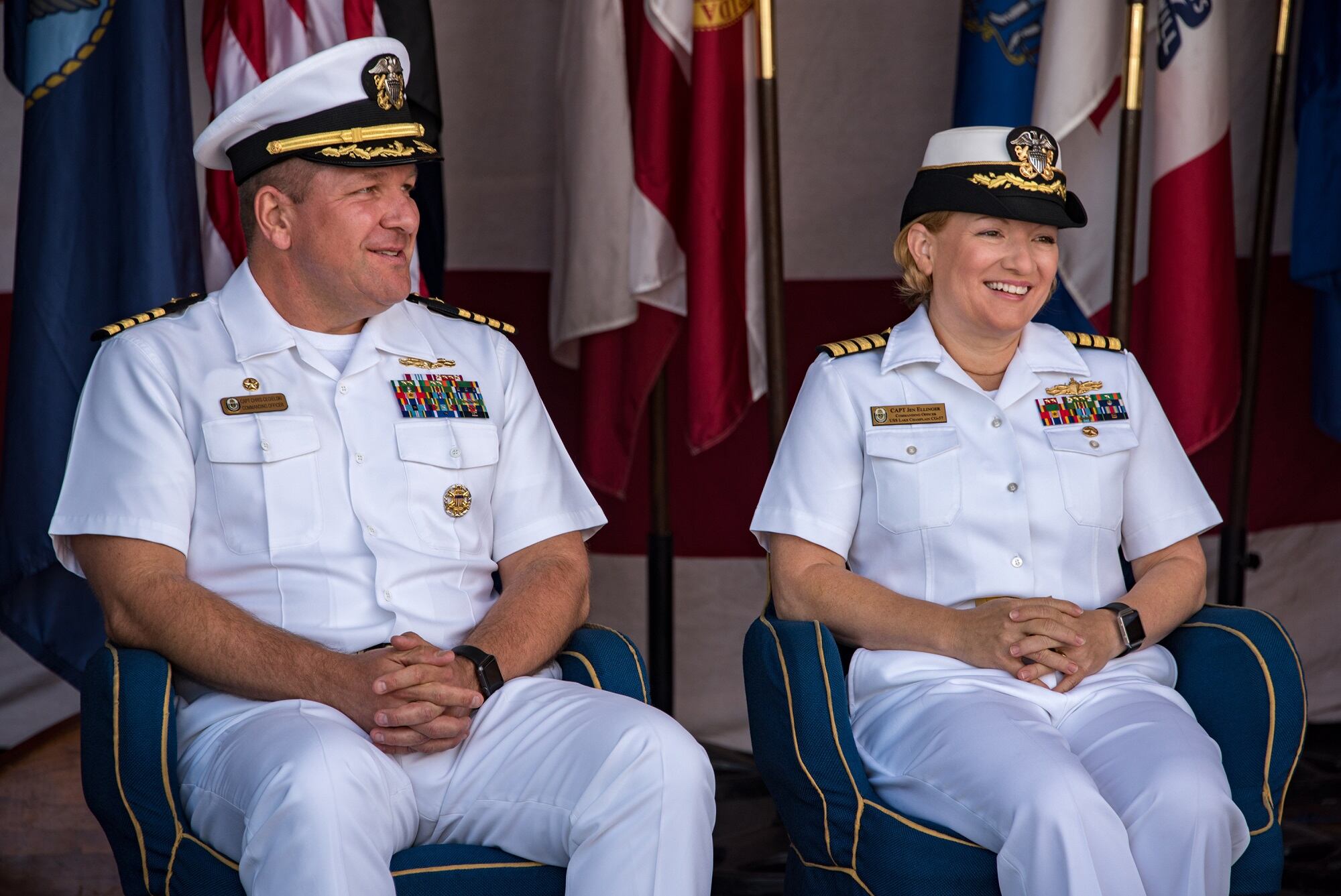Of the Navy’s four at-sea mishaps this year that sparked a fleet-wide review basic operation performance, the cruiser Lake Champlain’s collision with a South Korean fishing vessel has received the sparsest attention.
Unlike the disasters this summer involving the destroyers Fitzgerald and John S. McCain, which killed 17 sailors in total, no one lost their lives or were reported injured in the May 9 incident.
The Lake Champlain also did not fail in a high-profile setting, like the cruiser Antietam’s January grounding in Tokyo Bay.
RELATED

In a very bad year for U.S. warships, the Navy has offered little insight into what occurred.
Unlike the commanders of the Antietam, Fitz and McCain, the captain of the Lake Champlain was not relieved, and handed over the ship’s reigns in a standard change-of-command ceremony in September.
The ship’s leader at the time, Capt. Chris Cegielski, as well as the executive officer and watch team sailors, were administratively disciplined after the collision, Navy officials said last month, but they declined to provide further details.
Asked last week by reporters why circumstances surrounding the Lake Champlain remained so opaque, Chief of Naval Operations Adm. John Richardson said he would work to make public a report on the collision.
Richardson’s representatives said this week that they are readying a report for release by the end of November.
The Navy’s top officer was taking questions from the press in light of the service’s release of a comprehensive review identifying the systemic deficiencies that led to the at-sea mishaps this year.
The blistering review found that failures of basic seamanship were to blame for the incidents.
RELATED

Included in the review is the first public narrative regarding the Lake Champlain collision, one in which sailor failures are again cited as the cause of the incident.
“The collision occurred because an inexperienced Bridge team failed to follow safe navigational practices and take proper actions to avoid collision,” the review states.
The Lake Champlain was escorting an aircraft carrier on May 9, according to the review.
The Nam Yang 502, a South Korean fishing vessel, was operating in the same area, and Lake Champlain sailors were tracking it.
But awareness of the vessel was inconsistent due to poor radar operation and backup radar equipment that wasn’t working, the review states.
The ship’s bridge and other watch teams were undisciplined in their communications and failed to coordinate regarding the safety of planned maneuvers.
“While changing course to maintain relative position with the escorted aircraft carrier, the USS Lake Champlain turned in front of the fishing vessel without realizing the risk of collision,” the review states. “The Bridge watchteam was slow to react and executed improper and untimely maneuvers in an attempt to avoid collision.”
The Nam Yang 502 ended up striking the Lake Champlain’s port, or left, side.
While public reports on the Fitz and McCain collisions have not addressed the role the hulking commercial vessels played in those collisions, the Navy’s review of the mishaps — in this incident — lays blame with the Nam Yang 502 as well.
“Minutes before the collision, USS Lake Champlain’s Bridge watchstanders attempted to contact Nam Yang 502 on the radio and simultaneously signaled the fishing vessel using the ship whistle,” the review states. “Nam Yang’s global positioning system and radio were not working properly. Further, Nam Yang did not attempt to communicate with USS Lake Champlain or take immediate action to avoid collision.”
Geoff is the managing editor of Military Times, but he still loves writing stories. He covered Iraq and Afghanistan extensively and was a reporter at the Chicago Tribune. He welcomes any and all kinds of tips at geoffz@militarytimes.com.




